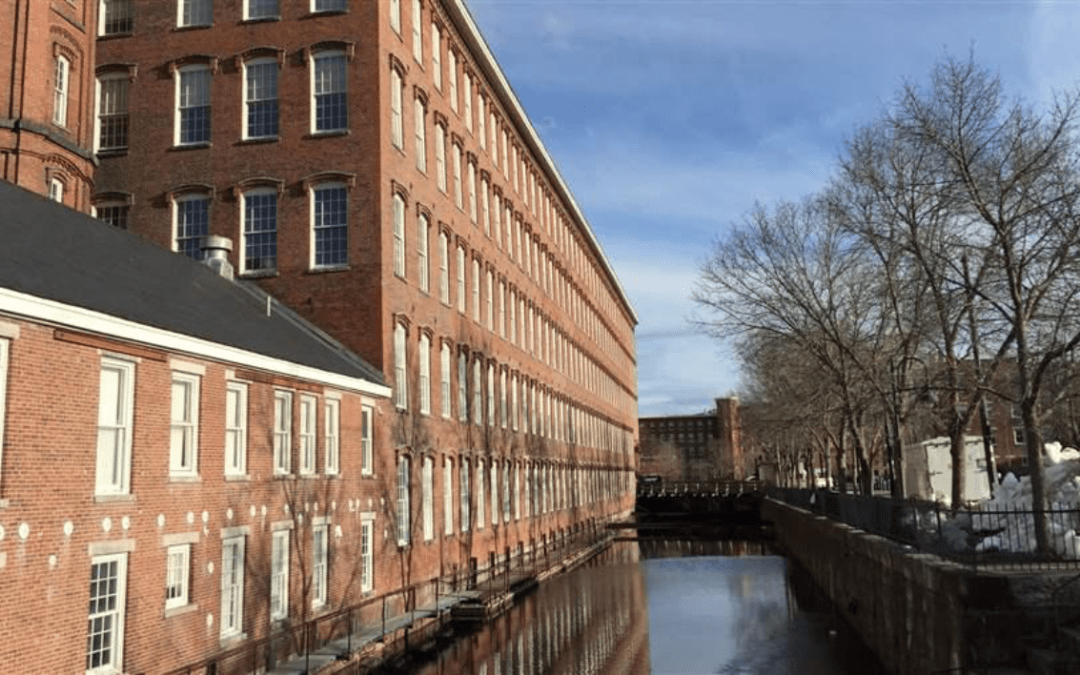By Chaya Sophon
During this time, I did not get access to use the NPS computers yet to work on the digital tab of the Lowell National Historic Park’s 40th Anniversary. I had to head into Boston in order to get my fingerprint scanned, so that was an opportunity to explore the other National Park Service areas: the Boston National Historic Park and the Boston Harbor Islands National Recreation Area. Unfortunately while getting my fingerprint service done, there was an I.T. problem and the appointment lasted longer than anticipated. I did not get the time to explore the Boston National Historic Park, but I knew the Harbor Islands were still a possibility. When I arrived at Long Wharf, the day already was already overcast gray and raining pretty hard. The entire ferry boat just had me and two couples as the only visitors aboard. Despite living in the Greater Boston Area my whole life, this was only the second time I ever got to be on the water. The industrial ports transitioned to islands after islands, until the ferry got to Georges Island. By the time of my ferry ride, kids on school trips were taking the boat back to Boston, so the only other humans on the island were me, the two couples, and two park rangers. I got a glimpse of the visitor center’s film and displays.
So began my first week as the Visual Information Assistant Intern here at the Lowell National Historic Park (LHNP). I can consider myself rather lucky for being able to get a deeper dive into the history of my hometown, and to make a footprint in how its history will be seen: as I am going to be working on making a digital tab for a past exhibit, the Museum’s 40th anniversary.
As a Cambodian-American, Lowell is one of the largest homes for my people in America after the diaspora of wars and genocide. The Cultural Resources Diversity Internship Program (CRDIP) aims to benefit diverse minority groups, and by having a Khmer American being able to work on interpreting part of Lowell’s history is great. Lowell has integrated many of its immigrant and refugee populations, and for example, the Angkor Dance Troupe which practices classical Khmer dance is in the same building (the Patrick J. Mogan Cultural Center) where I did my first week of inventory for the LHNP’s collections, because it is in a partnership with the LNHP and the University of Massachusetts to promote the cultures of this city.
With the curatorial department, I got to experience checking on the conditions of items for one of the main museum floor’s items, and items in the “Mill Girls and Immigrants” exhibit. This was once a corporate boardinghouse used to house the mill girls that went to work in the textile industries. Capital had to rely on women, that often came from the country, for their labor force, and the companies wanted to mimic domestic homelife as much as they could in these boarding houses. The exhibit is a walk-in experience, and seeing the rooms as they would have been showed just how over-crowded these quarters were. What I really enjoy about Lowell’s history is how pivotal it is in the US’s labor history, with the Bread and Roses strike happening a city over in Lawrence.
Also for this week, I’ve been attending the seasonal trainings with the park’s interpretive staff, so I’m getting a lot of different talks on Lowell’s multifaceted history. I got to see the full scope from Women’s History 101, how historic preservation is looking to work with redevelopment in Lowell, and a tour of the Pawtucket Falls Dam, which has been providing hydropower from the 1820’s to today. The image in this diary is of that dam I’ve seen most of my life.


